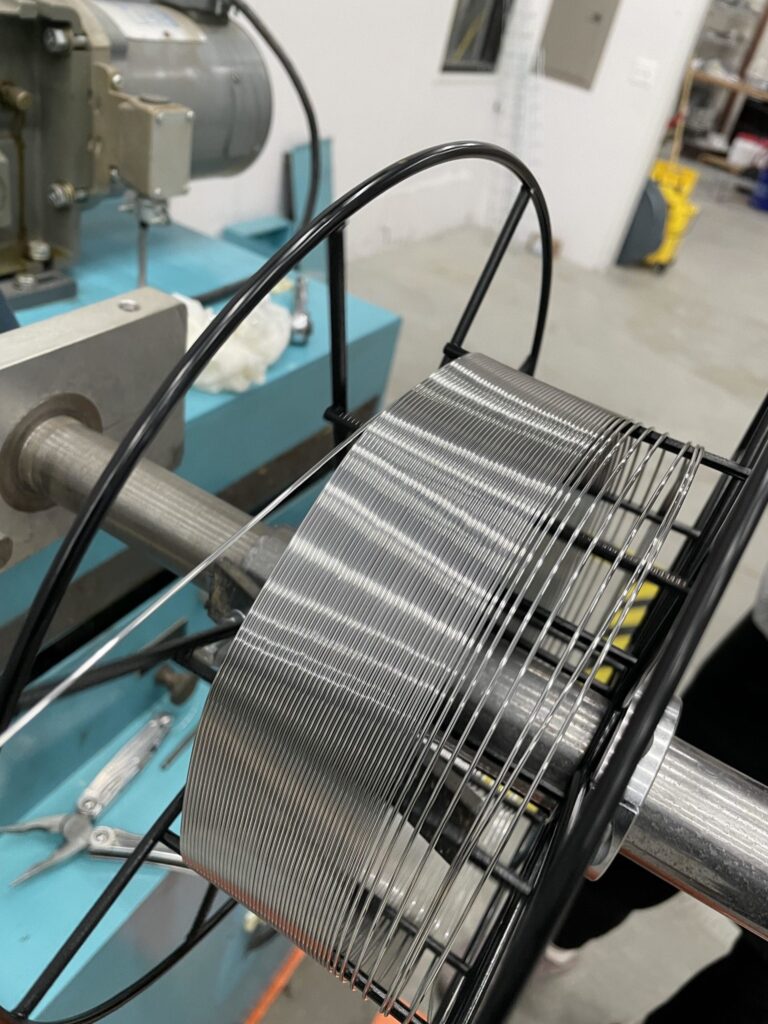AFWERX, part of the US Air Force Research Laboratory (AFRL), awarded a Direct-to-Phase II Small Business Innovation Research (SBIR) contract worth $1.25 million to Colorado’s Fortius Metals, to accelerate qualification of the company’s IN625-RAM2 wire alloy. Elementum 3D, Fortius Metals’ sibling company, has already commercialized the powder version of the nickel superalloy.
In particular, the Air Force’s interest in the material stems from its viability for hypersonic applications. Although the Department of Defense (DoD) has for years viewed hypersonic as a focal point of its strategic competition, the field of activity seems to be ramping up significantly in 2024. Earlier this month, U.S. propulsion company Ursa Major successfully tested its Hadley engine, which approached hypersonic speeds. Earlier this week, the Pentagon announced it had tested a hypersonic weapon flown over the Pacific Ocean in a B-52 bomber launched from Guam.

Stratolaunch’s Talon-A1 prepares for flight powered by Ursa Major’s Hadley engine. Image courtesy of Ursa Major
In a press release about the $1.25 million SBIR contract to qualify Fortius Metals’ IN625-RAM2 wire, Fortius’ founder and CEO, Jeff Lints, said, “AFWERX’s push to advance AM materials is critical to meet the rapid and evolving defense environment. It stimulates confidence in high-strength nickel superalloys and helps prove out challenging hypersonic applications. The foundational effort to qualify IN625-RAM2 for production will also benefit dual-use capabilities for industrial tooling and space propulsion.”
One of the worst things to happen to global supply chains is multinational corporations’ coming to see redundancy as a feature they could do without. This is precisely what makes Elementum 3D’s and Fortius’ shared vision so compelling. In no small part, DoD’s emerging shift on industrial policy hinges on building up redundancy in how the defense industrial base sources materials and parts. The main idea behind the Elementum/Fortius business model is to make the identical materials available in both wire and powder. By inherently building redundancy into AM metal supply chains, the two companies can maximize customers acquisition flexibility.
Additionally, creating the same materials for both powder and wire optimizes users’ ability to use AM for maintenance of printed parts: customers can use PBF for the originals, for instance, and DED or WAAM for repairs. Finally, the availability of the same material in multiple forms may incentivize a given contract manufacturing operation to diversify the AM techniques within its enterprise.
As the Pentagon continues sending out demand signals concerning the specific use-cases primarily driving its interest in AM, watch for accumulating evidence of the government department’s prioritization of redundancy and flexibility. If a small or medium enterprise is already filling DoD demand in one form, it’s likely this means there will be more demand for that material or product in another form, not less. The rationale behind incorporating companies like Fortius and techniques like all those comprising AM is to avoid the too big to fail model.
Subscribe to Our Email Newsletter
Stay up-to-date on all the latest news from the 3D printing industry and receive information and offers from third party vendors.
Print Services
Upload your 3D Models and get them printed quickly and efficiently.
You May Also Like
Consolidation in AM: How 2025 Is Shaping the Industry’s New Normal
The first half of 2025 has been marked by a clear shift in the additive manufacturing (AM) industry. Companies are no longer just focused on developing new tech by themselves....
Etsy Design Rule Change Reduces Selection of 3D Printed Goods
Online marketplace Etsy has implemented a rule change requiring all 3D printed goods on the site to be original designs. The update to the site’s Creativity Standards states, ¨Items produced using...
U.S. Congress Calls Out 3D Printing in Proposal for Commercial Reserve Manufacturing Network
Last week, the U.S. House of Representatives’ Appropriations Committee moved the FY 2026 defense bill forward to the House floor. Included in the legislation is a $131 million proposal for...
Transforming From Tourist to Native: Duro CEO Michael Corr Explains Why the Company Rebuilt its PLM Software on AI
In these early innings of the AI boom, many market analysts have expressed concern that AI spend has gotten too far ahead of the technology’s proven ability to deliver significant...

































